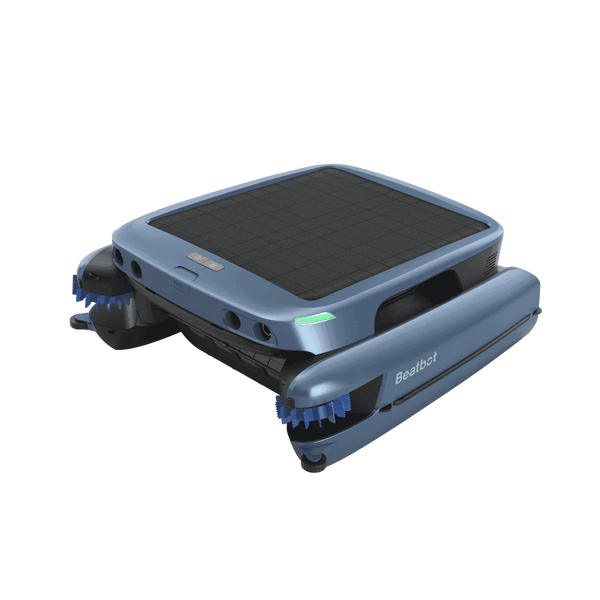How to Upgrade Your Pool Light to LED: A Comprehensive Guide
2024-02-28
Upgrading your pool lighting to LED is not just a step towards energy efficiency but also a significant enhancement to the aesthetics and safety of your pool environment. This guide delves deeper into the process, ensuring you have all the information needed to make a successful transition.
Table of content

Advantages Of Using LED Pool
The pool experience in United States revolves not only around the swimming, but also around the family entertainment and social activities. Picture yourself drifting down the Texas-shaped lazy river at the Marriott Marquis Houston or soaking up skyline views from the Four Seasons Philadelphia's 57th-floor infinity pool. With LED lights, you can experience the same touch in your personal garden, be it a pool party or quality time with the family.
Moreover, the USA offers strict pool safety standards, such as ASTM F2666-2016 (standard specification for safety and performance for portable residential swimming pools that involve prevention of child drowning, sanitation and electrical safety). LED lights produce very little heat and have a longer lifespan, making them perfect for pool safety standards: illuminating your pool area without harming them.
In addition, LED lights have environmentally friendly technology that employs very short wavelengths, so they meet the U.S. struggle guidelines on carbon footprints, which means you can enjoy your pool with no hazardous waste.
Selecting the Right LED Pool Lights
Brightness
Everyone wants their backyard to shine on those warm summer nights, but you want your pool to steal the show! Dimmable lights are the first step, but they'll also need to be able to shine like there were no power bills to stand in their way. Keep an eye out for lumens (the measurement of brightness). If you're picturing a well lit pool like its midday, go for more lumens. However, if you want a comfortable, low-key atmosphere, you want less lumens.
Color Temperature
Have you ever entered a room where you could sense a change in the mood depending on the light setting? Same goes for your pool. Warmer colors (2700-3000K)cast a gentle sunset hue making you feel warm and welcome—ideal on a leisurely evening. Conversely, cool colours (3500–5000K) like the early morning light keep the feel fresh and lively. The color temperature should be in accordance with the vibe that you want to create in your pool area.
Compatibility
Everyone loves a good DIY project, but no one wants to spend a weekend wrestling with their light fixtures to find that they don't match. Ensure compatibility with current pool system with the LED lights you select. Save yourself a bit of a headache with a quick call to the manufacturer or stop by your local pool supply store.
Certifications
Pool safety should come first when it comes to your pool. Seek out LED that has the UL image of endorsement. This certification indicates that the lights have been tested for safe and effective use, allowing you to enjoy your pool worry-free from electric shocks.
How to Install Your New LED Pool Lights
Tools You'll Need:
- Screwdriver
- Wire cutters
- Wire stripper
- Cross-head screwdriver
- Safety goggles
- Measuring tape
- Someone to assist you (not required but useful)
Safety First
It should go without saying that you need to cut power on your pool equipment before you do this. Trust me, you would rather not handle the aftermath of a shock.
Step-by-Step Installation
Step 1: Setting up the Workspace
Get your tools, so you are ready to go without getting distracted by looking for the missing tool, and prepare a clear workspace. If you are handling electronics, you should always have a buddy around to help or at least watch your back.

Step 2: The Old Lights Have to Go
Find the screws on top of your pool lights what you already have. Depending on the model, the positioning screws may number three around the light. You may have to go into the pool to access lights that are deep underwater.
Tip: If you have to submerge in the water, pack your swimming goggles so you can see the screws.
Step 3: Selecting the Right Retro Bracket
So now with the light itself, it will be fixed in the pool wall niche with a lengthy wire. The wire should be long enough to raise the light out of the water and set it on a towel at the pool side. Notice what position the wire is in as it is recessed into the niche or duct, as you'll need to place it back in the same position once the light is turned on. It can take longer to work out how to replace the wiring than it does to change the light.
Step 4: Unplugging the Wire
Disconnect the cable from the rear of the light fixture after removing the old light Keep the piece of wire as long as possible as you should cut the cable as close to the light as possible.
Step 5: Fabrication of New Bracket Installation
Take off the bracket that used to attach the pool light to the wall. Pass the cable for the pool light through the retro bracket supplied. When completed, attach the bracket in the original mounting location with the supplied screws kit. Certain LED lights have universal brackets with multiple hole patterns, so you can utilize whatever holes you have in your pool wall. This means that it does not need to drill more holes; the manufacturers of LED lights have already made plans to accommodate the new LED, ensuring a one-size-fits-all solution!
Step 6: Preparing the Cable
Use the specified length in the instructions to strip the cable. With a cross-head screwdriver and suitable fittings, connect the cable to the light before ensuring terminal connections are tight.
Step 7: Putting the Light Back Into the Water
You may have to go back in the water to replace the wires back behind the wall niche in the pool. After the wires are set, then insert the apparatus back within the divider or niche. Fasten this to the top of the light with the screws to hold it in place.
Step 8: Testing the Lights
Reconnect power and test lights Once you've finished installing the lights, turn the power back on and check the lights. The LED lights run their color cycle on initial power-up, so you can tell pretty quickly if they are functioning.
Compatibility with Various Pool Lighting Systems
If you're thinking of switching to LED for your pool lights, the good news is that, in most cases, you can adapt your existing pool lighting systems to LED. This upgrade is especially easy for pools with existing incandescent or halogen lights, as it usually requires little more than an essential bulb replacement.
The switch to LED may entail a complete redesign for complex fiber optic systems. Still, in terms of energy efficiency and longevity, the monetary energy expenditure pays dividends in the long run.
Many underwater fixtures not originally designed for LED can still accommodate LED bulbs, and they are also quite flexible in these applications.
Solar lights are a perfect match for the environmentally conscious pool owner, as they often incorporate an environmentally friendly design philosophy and tend to use LED technology exclusively.

LED Pool Lights in Saltwater Environments
Those with pools that use saltwater are in luck. LEDs are an effective lighting tool for saltwater pools as long as they are designed to resist the corrosive effects of saltwater.
Therefore, when lights are used outside, water, dust, and corrosion resistance are essential. Always use higher IP-rated lights (or IP65) and consider stainless steel or corrosion-resistant materials.
Troubleshooting LED Pool Lights
If you find your LED pool light is not working correctly, you may want to follow a few troubleshooting steps. First, check whether your electrical system is not malfunctioning, and the light is receiving power.
Next, take a look at the fixture itself to see if there is any damage or moisture leakage that could be causing the problem. If that doesn't work, then the LED bulb will need to be replaced to rule out any issues with the bulb itself.
If everything else fails, you should consult a qualified pool professional to troubleshoot more advanced electrical or installation problems.
Relative Blogs
About the author



















